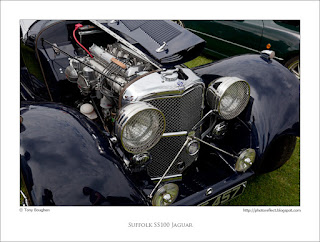click photo to enlarge
A few months ago I happened upon a photograph of the winner in Boston Borough Council's "Building Excellence Awards 2012". It was a new farmhouse in Kirton, and when I looked at it my heart sank. The accompanying text described it as being in the "traditional country house style". Quite what the writer meant by that I have no idea because the features of the English country house as we know it were nowhere evident. In fact, the exterior was, as are far too many English houses, an amalgam of vernacular details. The best you could say of this example was that they were derived with a reasonable degree of consistency from the eighteenth century where, often, they are plucked eclectically from any or all of the sixteenth through to the nineteenth centuries. Though the photograph was small I could see gable chimney stacks, shouldered gable wall parapets, dormers, a plait band and brick hoodmoulds. The main elevation was symmetrical except for one of the two main ground floor windows being in the form of a bay with a splayed lead roof. The walls were brick and the roof appeared to be an artfully mottled collection of plain tiles. I'm sure that this is a perfectly satisfactory house to live in, and will serve its owners well. What disappointed me so was that it had been chosen as the very best example of local building to be found in the area during the designated 2011-2012 period. If that's the best, I thought, the others can't be much. Why, I thought, does anyone today want to clothe a building in the appearance of a modest eighteenth century house? Admittedly, the eighteenth century did more with less than most centuries and produced simple, pleasing brick houses that look better than many later examples. But where, I wondered, were the innovative, modern houses, the buildings that sought to push forward the boundaries of what can be achieved within a budget? Buildings that were built in response to today's families' needs rather than the sort of thing that might feature as a background in a kitsch watercolour featuring men in Tattersall check shirts and moleskins and women in Laura Ashley dresses.Similar thoughts descended on me when I attended the Boston Classic Car Club show (also at Kirton) a short while ago. I was standing in front of what, with my limited knowledge, I thought was an SS100 Jaguar. This sports car was built between 1936 and 1940 by SS Cars Ltd of Coventry, England, the company that after the war was renamed Jaguar (the SS initials having acquired negative associations). However, on reading my booklet, and after further research, I discovered that it was a replica manufactured by Suffolk Sportscars in 1978. The idea of building a replica of an old car is as alien to me as building a modern version of an eighteenth century house in 2011-12, or creating a "new" Mini or a "new" VW Beetle. It represents a failure of vision, a lack of belief in now, it promotes the sham over the authentic, the past over the present, and it shunts design into a cul-de-sac. Most of all it is a missed opportunity for progress. Retro that involves merely aping the past should have no place in either design or styling. Taking old forms and deploying them in new and innovative ways is another matter. Some Renaissance, Victorian and Edwardian architects managed this very well. But, unfortunately, that's not often what we see nowadays.
photograph and text © Tony Boughen
Photo 1
Camera: Canon
Mode: Aperture Priority
Focal Length: 47mm
F No: f7.1
Shutter Speed: 1/250 sec
ISO: 100
Exposure Compensation: -1.0 EV
Image Stabilisation: On

